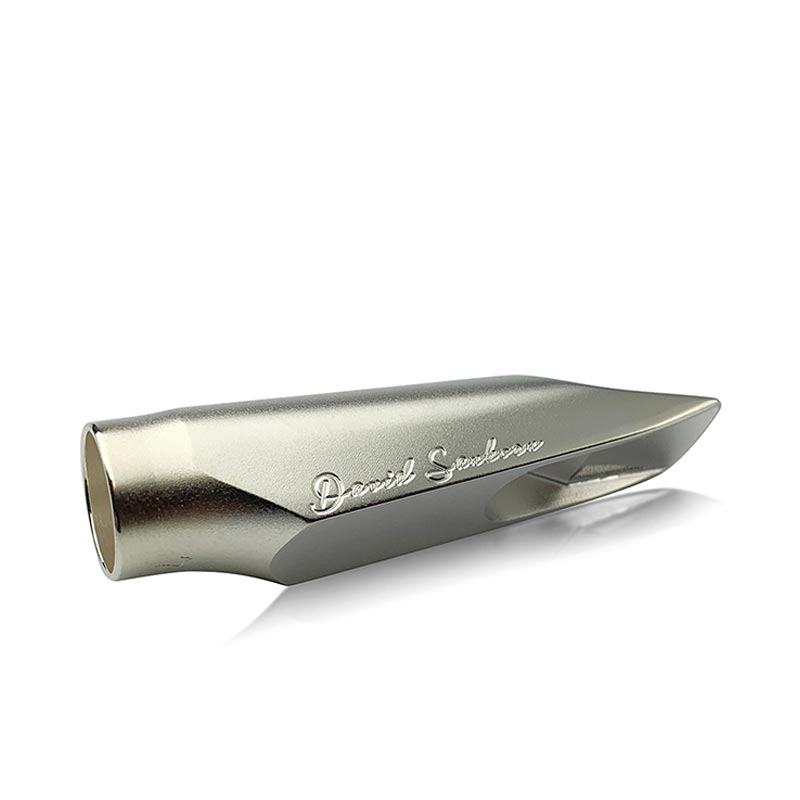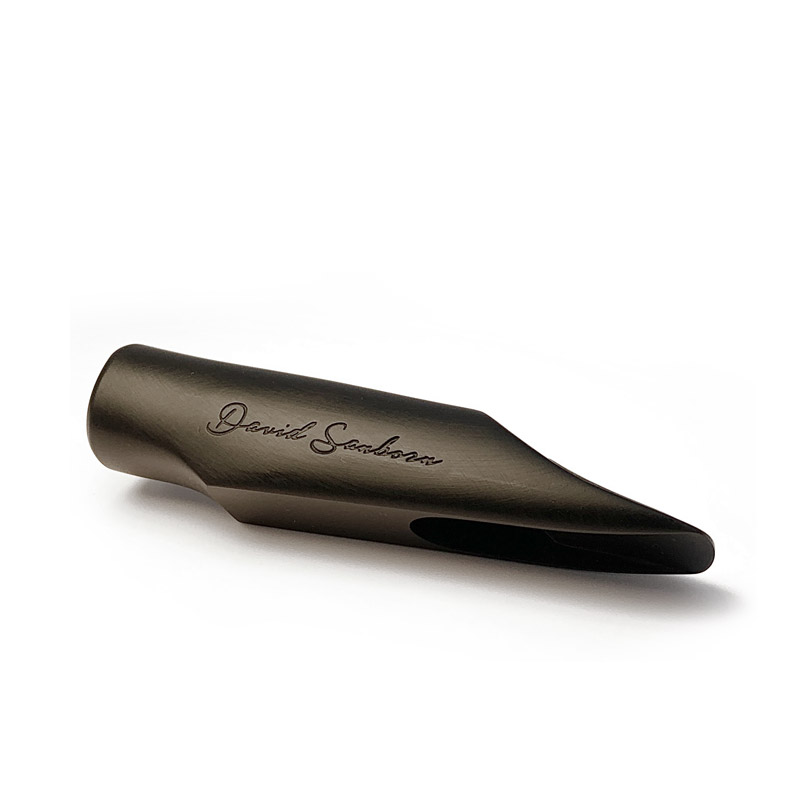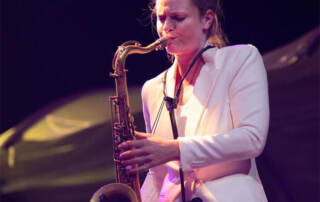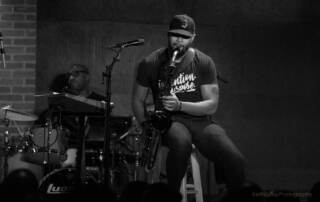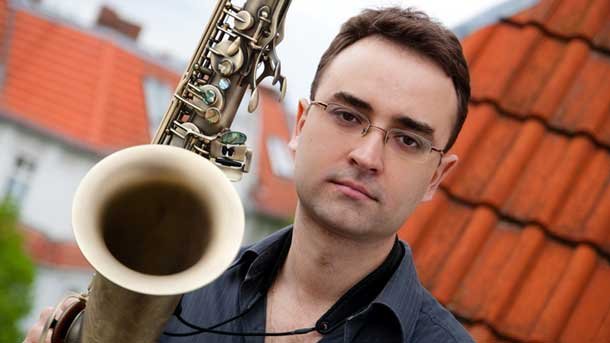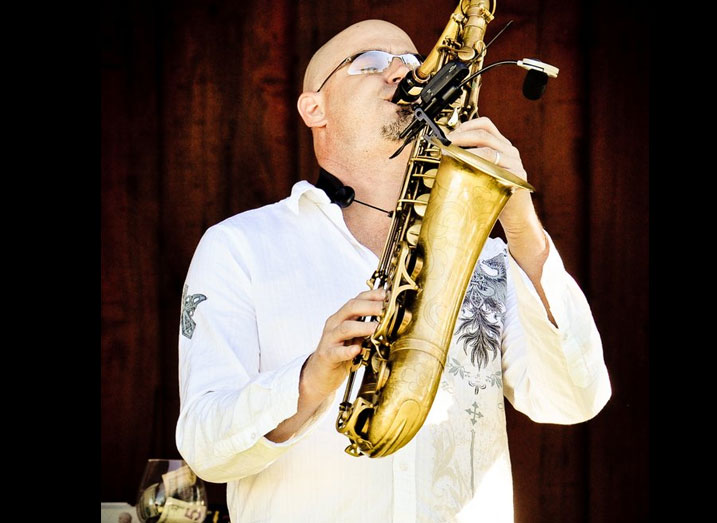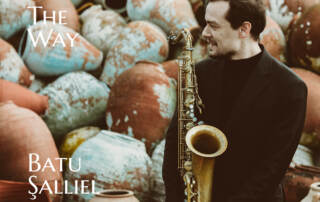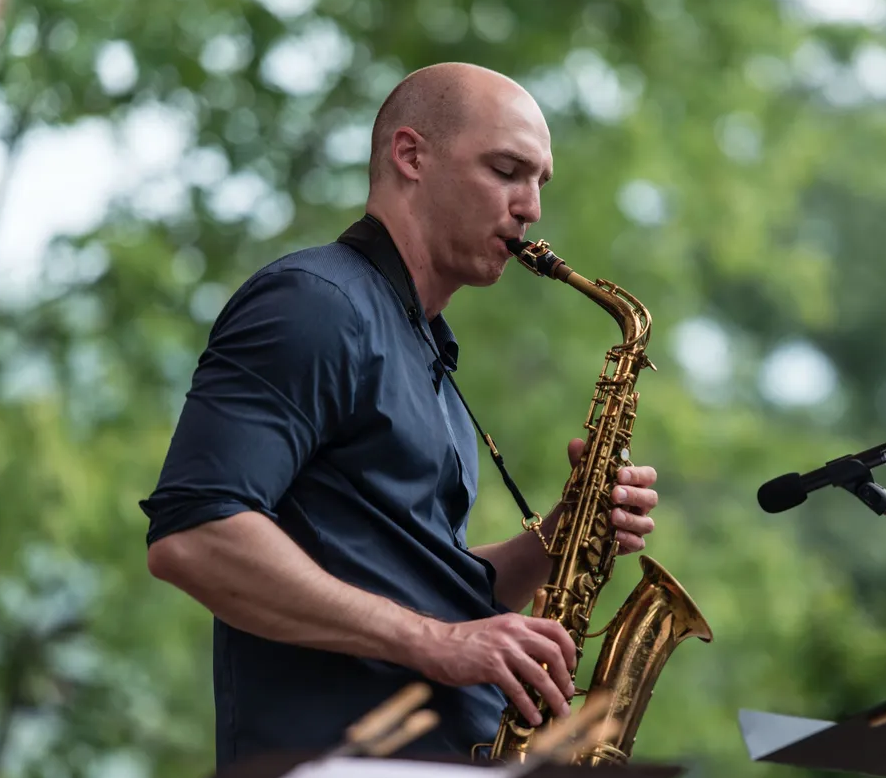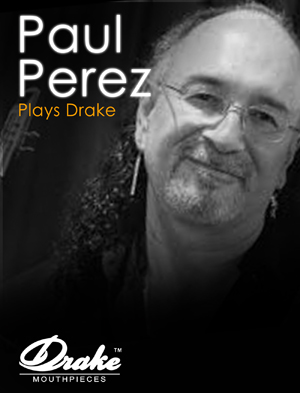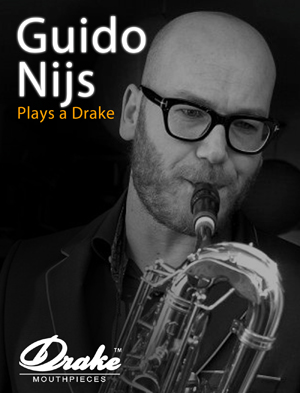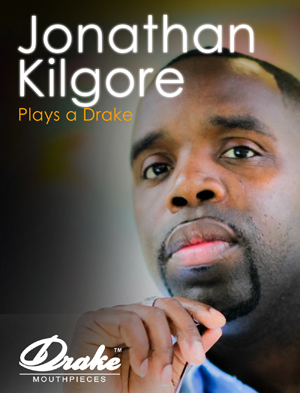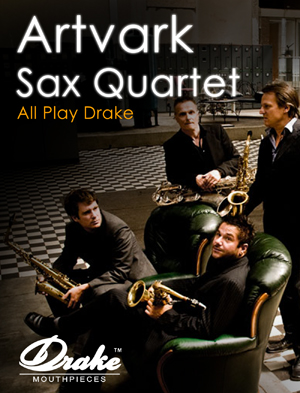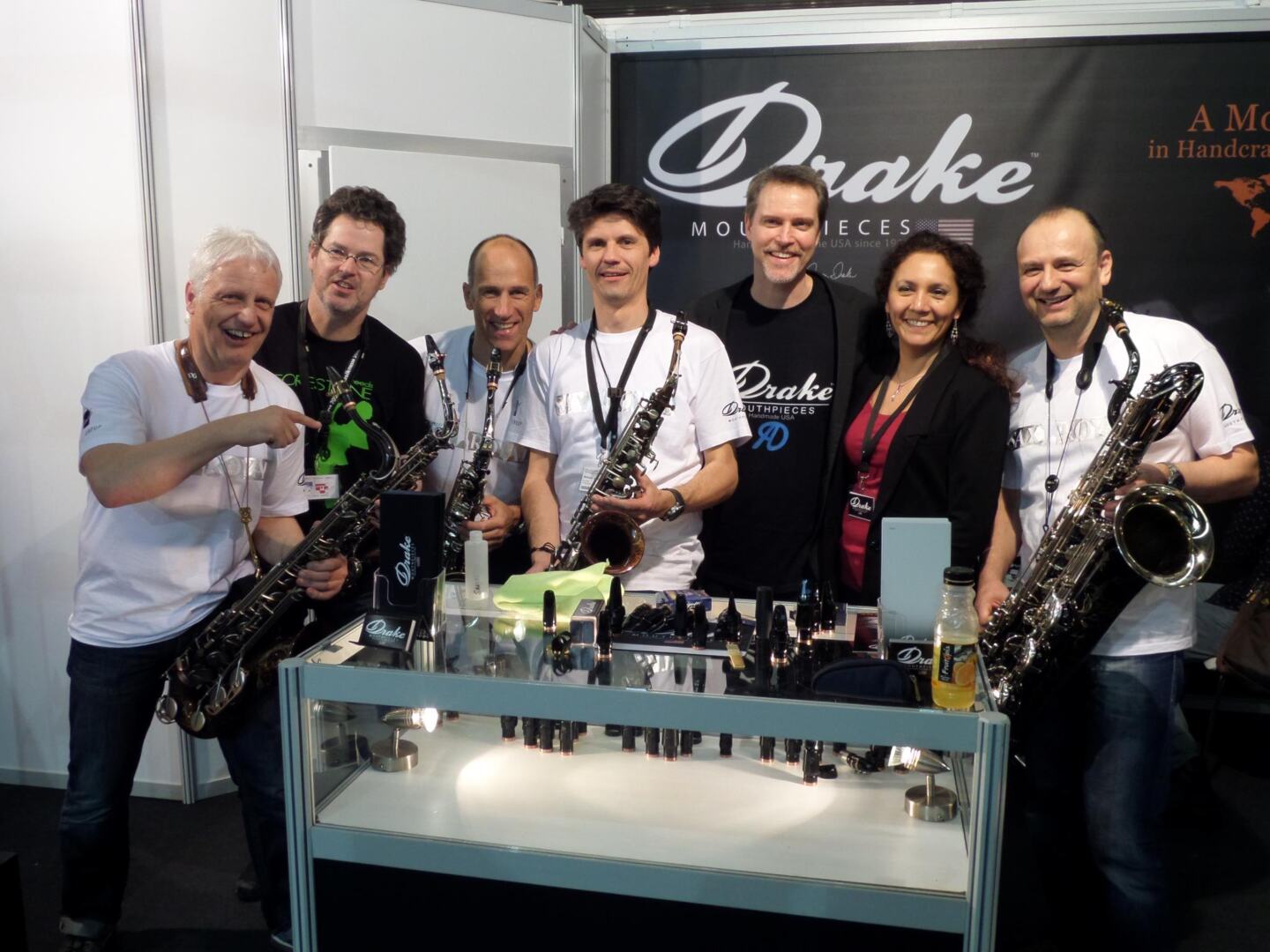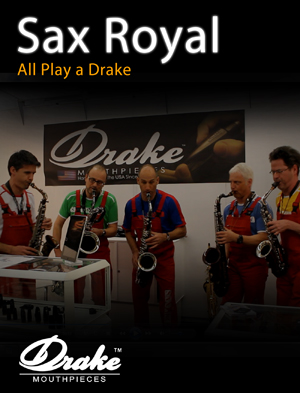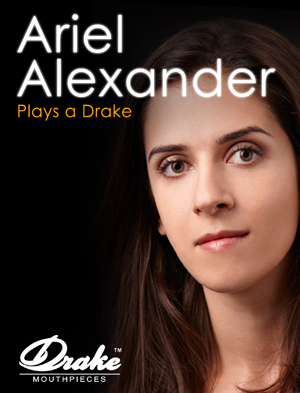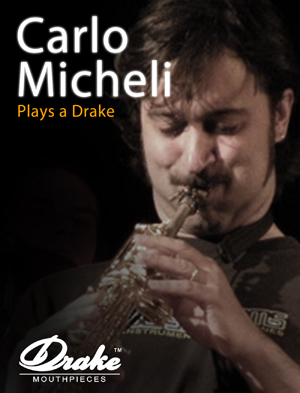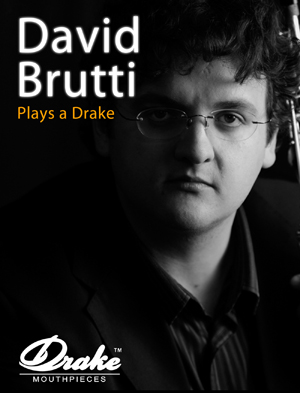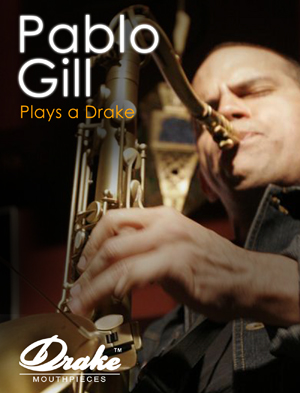David Sanborn
Alto Models
Masters Series
.
In 2013 David invited me to meet after his concert in San Antonio Texas. David expressed his need for a mouthpiece that could replace the mouthpiece he played for many years. From this initial meeting I began making prototype mouthpieces for David to try, and within several months we landed on a design that David liked. Not only liked, but a mouthpiece that could be his number one piece. In 2014 Dave switched and began playing exclusively on his Drake mouthpiece.
Several years have passed since then, and now David and I have decided to offer this mouthpiece as the David Sanborn model.
.Each Sanborn Signature mouthpiece is precision-milled from virgin brass rod stock, then extensively hand-worked and finished by Aaron Drake. Aaron’s dedication to his craft and attention to detail ensure that each mouthpiece is an exact reproduction of David Sanborn’s own. The result is the harmonious combination of a rich core sound, with a precise, instant attack and; ultimate projection. David calls this moment and quality “the point”. This is the pure impact of the sound before rippling into space (See the video on right to hear David explain “The Point” while sitting with Aaron).
The mouthpieces are plated in sterling silver for an elegant, satin-like finish.
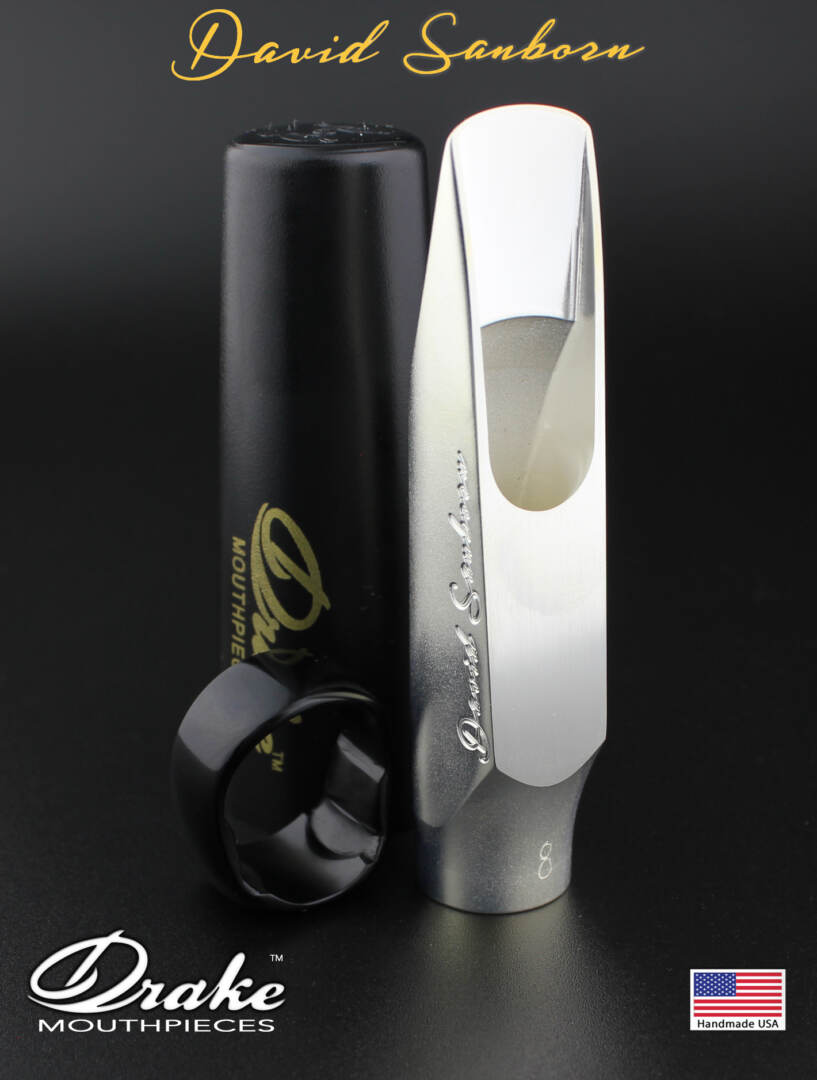
2 models available
The Sanborn Metal Masters model
Hand finished / milled brass with silver coat.
“I find these mouthpieces extremely responsive and flexible…I can go anywhere on the horn with nuance, texture and attack.” (taken from the video of David and Aaron on this page)
– David Sandborn
Handcrafted with Drake’s Vintage Resin.
“This new Vintage Resin really feels like home to me. It is an extraordinary mouthpiece, with full spectrum tone. The intonation is incredibly precise. It is like nothing I’ve played before. It is incredibly free-blowing and full. A joy to play.”
– David Sanborn
A conversation between David and Aaron about this model.
David Sanborn has released 24 albums, won six Grammy Awards, and has had eight Gold albums and one Platinum.
Having inspired countless other musicians, Dave has worked in many genres which typically blend instrumental pop, R&B and traditional jazz. He released his first solo album Taking Off in 1975, but has been playing the saxophone since before he was in high school when he was inspired by the great Chicago blues artists near his hometown of St. Louis.
above is a review from our UK dealer – Sax.co.uk
DC: Your Masters Series line of mouthpieces includes tributes to many saxophone greats. What makes working on the David Sanborn Model so unique and special for you?
AD: Dave is such an icon of the alto saxophone, a truly innovative voice that stands out. He has contributed solos to so much music in the popular music world. I can remember my early journey into studying music and the saxophone and Sanborn was on Saturday night live, David Letterman, and of course the “Night Music” show (that was on the air during my saxophone studies at Eastman). David’s presence on TV gave me, and many of my friends, hope of a fruitful career in music, he crossed so many “boundaries” in music. He has helped us all see and hear the possibilities of incorporating the saxophone in all styles of popular music.
DC: How did this project come about? Was it initiated by David? What were his demands and design criteria that you set out to meet?
AD: Yes, Dave contacted me initially and asked to try some of the mouthpieces I was making. From there we met up back stage at his concert in San Antonio Texas in 2014. At that time Dave was playing one of the last old Dukoff mouthpieces that worked for him. He was looking for a mouthpiece that could take the place of his old piece. He described to me how he feels the acoustics of tone production and talked a lot about the importance of the attack of the note, as he describes “the point” of the sound. He felt that in my mouthpieces. I had a look at his mouthpiece, Dave was on a concert tour and did not take the mouthpiece from his neck cork, I took some notes, then I went about designing a new mouthpiece, not a copy of his old piece. My design process is all done by hand (a lot of incremental adjustments and play testing), I sculpted the prototype mouthpiece taking into consideration the various acoustic design elements: table angle, baffle contour, chamber shape, bore, etc… I made several prototypes through a one piece casting process and finished them by hand, as I do with all of my mouthpieces.
DC: Have you always been a fan of David Sanborn? Was there a recording or performance of his that really made an impression on you?
AD: Yeah, Dave was a great inspiration to me growing up. I pretty much had all of his records. My father took me to the 1985 “Cool Jazz Festival” at the Saratoga Performing Arts Center – that was the first time I saw David perform live – it was inspiring. Taking off, Double Vision, and Straight to the Heart come to my mind as some favorite albums that I listened to while in High School.
DC: As far as the conception of the David Sanborn Model, did you draw inspiration from legendary mouthpiece models? From a design perspective, which well-known mouthpieces informed the structure of this model?
AD: I have been making mouthpiece since 1990, so I have a large back log of designs that are my original designs. I did take into consideration the old Dukoff design, because this is the design that worked for Dave for many years. But Dave was specific in wanting to make a change from that design. One thing to mention here is that Dave was playing a handful of Dukoff mouthpieces that he got from Bobby in the 1980’s for much of his career, until he switched to his Drake mouthpiece. Dave mentioned that, over the years, he had gone back to Dukoff for another mouthpiece but could never get another piece that worked for him.
DC: In design, was the mouthpiece done in CAD, or was it a hand-made blueprint first?
AD: The piece came from the hand made version and then was painstakingly converted to CAD for reproduction purposes. The process involves various technologies, like 3d scanning. This is essentially the only way to achieve the level of consistency from piece to piece, and creates the possibility for every player to have the same potential experience.
DC: Is the mouthpiece worked by hand at any stage, or is it entirely a CNC / machined process?
AD: There is extensive hand work done on the CNC milled blank. The chamber, baffle and facing are all worked and finished by hand in order to achieve the exact specifications of Dave’s. So, what a player is getting is a mouthpiece identical to what Dave plays. There is something very special in the way the air moves and the attack, “point” of the sound of these mouthpieces.
DC: What can you tell us about the materials used for this mouthpiece?
AD: Precision milled from virgin brass rod that we have sterling silver plated.
DC: Explain the finish of the mouthpiece.
AD: The piece is finished with several different textures in considerations of their functionality. For example the primary baffle is shaped by hand and polished – this is where the attack and initial sound is created, very careful time and attention is put here. The 2nd and 3rd baffles and the chamber of the piece are given a satin finish after the hand contouring is done to the venturi chamber. The baffle transitions are intentionally left untouched in order to have a crisp line – this helps to create a turbulence to the air flow and facilitates the production of certain harmonic partials in the sound. The throat transition to the chamber is curved and smoothed by hand to allow a natural / ergonomic air column as it transitions through the Venturi chamber – this is affectively compressing the air column as it is spead up and moves into the saxophone.
DC: How has the mouthpiece changed since the early prototypes, to the model/s made for David in 2014, to now?
AD: There is no difference in the acoustic design, and dimensions.
DC: Explain the design of the mouthpiece in traditional nomenclature, ie., baffle style, chamber design / size, etc.)
AD: The acoustic concept is fundamentally based on a three tiered baffle configuration and a venturi chamber which is considered medium in size. These design elements work together to compress and move the air in a specific way – there is a freeness to the way the air flows while still maintaining a comfortable amount of resistance – which is necessary for tonal color and expressive nuance.
DC: What are the technical specs of the different tip openings and do you have some comments in regards to the advantages of closer or more open tips?
AD: Dave plays the 8 opening (.090”) – this tip opening will require experience and a well developed embouchure. The 7 (.085”) and ultimately the 6 (.080”) are options to consider based on the players experience and preference. All of the mouthpiece / baffle contour ratios are adjusted for the various tip openings – so the piece will feel fundamentally identical from tip to tip.
DC: Is the mouthpiece quite “reed-friendly”? Are there particular brands and types of reeds that pair very well with it?
AD: I like to recommend the Rigotti Gold 2.5M reeds (Dave favors these too) for this mouthpiece, but it is designed to be very reed friendly and I encored players to experiment with the brands that they like. I consider this a personal preference choice.
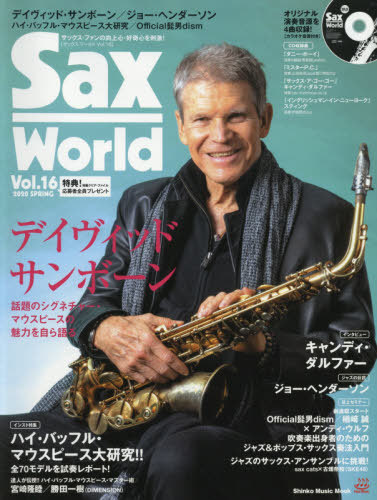
Interview in March 2020 issue of “Sax World” in Japan.
「サックスワールド」はサクソフォン専門の日本の雑誌で、サクソフォン本体、アクセサリ、および著名プレーヤーなどを幅広く取り上げています。2020年3月発売号では、デビッド·サンボーン氏のインタビューとハイバッフル·タイプのマウスピース特集を掲載する予定です。その特集の中で、メーカーインタビューとして、デビッド·サンボーンのシグネチャーモデルを提供しているドレイク社(Aaron Drake氏)のインタビュー記事を紹介したいと考えています。以下の質問にご回答いただけると幸いです。
“Sax World” is a Japanese magazine dedicated to saxophones, and covers a wide range of saxophone bodies, accessories, and famous players.
The March 2020 issue will feature an interview with David Sanborn and a special feature on hi-baffle-type mouthpieces in which we would like to interview Aaron Drake of Drake mouthpieces, a true artisan who has handcrafted signature models for David Sanborn over the years.
We hope you’ll answer the following questions.
サックスワールド編集長
湯川雅宗
1. デビッド·サンボーンのシグネチャーモデルの開発の経緯についてはウェブサイト(https://www.drakemouthpieces.com/David_Sanborn_Model.html)に書かれていますが、そもそもサンボーン氏はなぜ、ほかのマウスピース·ビルダーではなく、ドレイク·マウスピースに開発を依頼しようと考えたのでしょうか? その理由をサンボーン氏本人から聞いていれば教えてください。
The details of David Sanborn’s signature model development can be found on your website (https://www.drakemouthpieces.com/David_Sanborn_Model.html),
but can you please elaborate on how the project was initiated and did David express why he specifically wanted you to develop a mouthpiece for him?
David was a customer of Drake Mouthpieces before we met. He personally purchased several of our mouthpieces including the Contemporary Alto 8, NY Jazz 8 and the Jazz alto 8 – he felt the responsiveness and qualities of the “point” of the sound (attack) that he was looking for. His experience with our other mouthpieces led him to requesting a custom mouthpiece. Previously David played one of the last Dukoff mouthpieces that he acquired from Bobby in the 1980’s. The time had come to retire that mouthpiece, and David was looking for something new. He wanted to retain some of the essential qualities of his sound, but with a new mouthpiece that would offer him something more.
2. サンボーン氏は、氏が使っていたDukoff D8の予備(コピー)が単純に欲しかったのでしょうか、それとも、Dukoff D8では足りない何かを必要としていて、新たなマウスピースとして開発を依頼したのでしょうか? また、サンボーン氏はこれまでにSAXWORKSやSAXZに開発を依頼したことが知られていますが、それらのマウスピースに不満を持っていたのでしょうか?
Did David simply want a spare (copy) of the Dukoff D8 he used, or did he need something extra that the Dukoff D8 lacked?
Also, it is known that David has commissioned SAXWORKS or SAXZ for development so far, but was he dissatisfied with those mouthpieces?
The Sanborn Signature Masters Series mouthpiece was never intended to be a replica of David’s Dukoff. David felt certain limitations of his Dukoff D8 and was looking for something that gave him a broader range of expression. As far as any other products designed for David, I can only state that, to my knowledge, he has been performing and recording exclusively with his Drake mouthpiece since 2014.
3. サンボーン氏が動画(https://www.youtube.com/watch?v=DxlZDE4xlSQ&t=122s)でも語っている “the point of the sound” をもう少し具体的に説明していただけますか? また、あなたはどのように解釈し、どのように設計に反映したのでしょうか?
Could you explain a bit more about the “the point of the sound” that David also mentioned in the video (https://www.youtube.com/watch?v=DxlZDE4xlSQ&t=122s )?
How did you interpret his idea and how were you able to reflect them onto your design?
During the prototype stage of development, David and I spoke at great length about this subject. I relied on his feedback about each mouthpiece and my skills as a saxophonist to determine the exact design and finishing procedures that would be necessary to achieve the immediacy of attack which David refers to as “the point of the sound”. Much of it comes down to the way the air column interacts with the various internal shapes of the mouthpiece, combined with my hand finishing work. I have been making mouthpieces since the 1990’s, and have made 10s of thousands of mouthpieces by hand – so my skills as a craftsman / artisan are a critical component to the performance of each mouthpiece. There is a nuance to the hand finishing process that is the result of many years of practice and repetition, something that has resulted from my dedication to the craft – there are no short cuts to developing these skills.
This is also the reason the David Sanborn signature mouthpiece is a limited production mouthpiece, something unique in today’s market.
4. シグネチャーモデルは3段のバッフルになっていて、さらに第1バッフルは鏡面仕上げにするなど、Dukoffとは設計がずいぶん異なるように見受けられます。こうした設計はどのようにして着想したのですか?
The signature model has a three-stage baffle, and the first baffle has a mirror finish, so the design looks quite different from Dukoff. How did you come up with this design?
The initial prototype for the design is the result of hand sculpting the mouthpiece. This is how I began making mouthpieces, using ceramic to sculpt allows for subtle contours in the design. Once we arrived at the design we tested a variety of textures on each surface. We tested a filed texture to the initial baffle as well as various types of ridges and other finishes. David played each variation and commented on his preferences. We discovered that the best type of baffle finish to achieve this “point” of attack that David was looking for, was a polished finish on the initial baffle. This also contributes to the free blowing nature of the design. It is part of a process that requires more time to finish, one more example of the attention to details involved in producing a piece like this.
5. そのほか、シグネチャーモデルの開発ではどのような苦労や課題がありましたか?
What other difficulties or challenges did you have in developing this signature model?
6. シグネチャーモデルを購入したプレーヤー(プロ·アマ問わず)からインプレッションが届いていたら教えてください。
What kind of feedback have you received from players who purchased the signature model (pro or amateur)?
The feedback from the market indicates that this may be the best high baffle metal alto mouthpiece many players have ever experienced. There is an essence to the mouthpiece which offers the player an insight to David Sanborn’s iconic tone. We are not claiming that this mouthpiece will make the player sound like David
Sanborn, yet; we have captured the essential qualities in the design that David prefers.
7. サンボーン氏のシグネチャーモデル以外の質問です。あなたは1990年からマウスピースの製造を手掛けているそうですが、創業のきっかけを教えてください。
You have been manufacturing mouthpieces since 1990.
Could you tell us how you started your business?
In my childhood home, my parents converted our garage to a ceramic studio, where they made pottery. Naturally, I spent a lot of time working with clay. I started playing saxophone at age nine and from the beginning I was curious about acoustics. As a saxophonist I excelled in high school and went on to study saxophone at the Eastman School of Music where I received a Bachelor and Masters’ Degrees in Applied Saxophone Performance. My Professor, Ramon Ricker, encouraged me to examine my unique talents – “ask yourself if you have combinations of interests or unique talents that set you apart” – that’s when I began thinking about how could I combine my love of the saxophone and music with my love of sculpting and acoustics. I started by making musical instruments out of ceramic – all kinds of flutes – traverse, end blown, shakuhachi style flutes, fipple flutes, double and triple flutes. The ceramic offered a new dimension in resonance that really surprised me, the projection qualities were really great. I was learning a lot about acoustics working with ceramic. Eventually I began making ceramic saxophone mouthpieces. I made a lot of them, each one was another experiment in baffle design, chamber size / shape, and facing contour. I made several hundred before I ever considered offering them to other saxophonists. The acoustic advantages were undeniable – the glazed ceramic has a higher surface density that any other material, and the air is free to move through the mouthpiece. I released my first commercially-available ceramic saxophone mouthpieces in 1990 and was a pioneer of this concept. It had never been done before and players had concerns about fragility and durability. We eventually perfected the process of combining the ceramic with resin composite to create the Vintage Resin we currently offer. I also came up with the idea to make the chamber out of ceramic – These are my Ceramic Resonance Chamber mouthpieces. The exposed ceramic chamber interacts with the air column and “warms” the tone in addition to creating greater projection. One of my newest acoustic innovations is the Brass Resonance Chamber mouthpieces. These offer the player the comfort of the vintage resin combined with the harmonic overtones of brass in the sound – as well as enhancing projection qualities. Many of the mouthpiece designs that I make today are designs that originated as those early hand-sculpted ceramic mouthpieces.
8. 近年は “Vintage Resin” という独自の素材を用いて、一般で言うラバー系のマウスピースを提供していますが、この素材の特徴やエボナイト(ハードラバー)との違いを教えてください。
In recent years, rubber mouthpieces have been created with a unique material called “Vintage Resin.” Can you please tell us the characteristics of this material and the difference from ebonite (hard rubber)?
The “Vintage Resin” material that we have used for many of our mouthpieces is a resin composite material that incorporates ceramic to enhance its acoustic properties. We are the only mouthpiece maker to utilize ceramic in our mouthpieces, and it provides for outstanding acoustic qualities. There is an increased surface density which helps move the air column and contributes to an immediate resonant quality. The “feel” is very similar to ebonite, but the acoustic and resonance properties are enhanced.
9. サンボーンモデルのほかに、フィル·ウッズやBoney Jamesなど、いくつかのモデルを
“Masters Series” として提供しています。今回は誌面の都合ですべては取りあげられませんが、特徴的なモデルあるいは人気のあるモデルをいくつか紹介してください。
In addition to the Sanborn model, several models such as Phil Woods and Boney James are available in your “Masters Series” line.
What are some of your other popular series?
We have an extensive line of mouthpieces and many of them have been received very well by the marketplace. The Jerry Bergonzi “EB”,“Power Resonance” and “Slant” , the Pete Christlieb along with the Eddie Daniels “Open Secret” and “LaVoce” are other popular models in our Masters Series.
Our NY Jazz Alto and Tenor models have been best sellers as well.
The “Son of Slant” Large Chamber for Tenor and Soprano are played by many saxophonists around the world. The Jazz and Contemporary Alto and Tenor models and the Studio Tenor models are also popular.
Also, the Ceramic Resonance Chamber Jazz and Contemporary Alto and Tenor are becoming more and more popular – these are other mouthpiece innovations. The ceramic chamber contributes a core vibrational warmth to the sound while also facilitating greater projection qualities. I am also excited about our new “Brass Resonance Chamber” mouthpieces – these utilize the same manufacturing innovation as the ceramic chamber mouthpieces. The Brass chamber contributes the harmonic overtones of brass in the sound while giving the player the comfort and control of the vintage resin material.
10. 日本にはデビッド·サンボーン氏のファンが少なくありません。また、あなたが影響を受けた “Night Music” は日本でも放送されていたことがあり、古くからのファンは今も映像を覚えています。そうした本誌の読者に向けて、最後に一言お願いします。
There are many fans of David Sanborn in Japan.
And one of your influences, “Night Music” has been broadcasted in Japan, and many fans still remember the video.
Do you have any comments you would like to make to those fans and our readers?
Yes, I am also a huge fan of David’s music. Night Music was on the air while I was studying saxophone at the Eastman School of Music and it was a real inspiration to me. The way David added his unique voice on the saxophone to so many genres of music – it helped me to appreciate different kinds of music and gave me the hope of a fruitful career in music. It has been an honor for me to work closely with David and to get to know him as a friend. He has been a great inspiration to the saxophone community and to me personally. David’s new “Sanborn Sessions” is offering us another look into the intimate art of music creation and I am loving it!
![]() The Drake family of artists is a growing and worldwide community. These musicians are connected by their musical pursuits and; their common recognition of the outstanding quality of our mouthpieces. We support musicianship with our inspired designs, which empower performers to reveal their unique voice. » Featured Artists 2021
The Drake family of artists is a growing and worldwide community. These musicians are connected by their musical pursuits and; their common recognition of the outstanding quality of our mouthpieces. We support musicianship with our inspired designs, which empower performers to reveal their unique voice. » Featured Artists 2021


